NEWS TAG
brand
Basement Flooring Trends 2026 - Top 10 Best Basement Floor Ideas
Basements no longer need to be dark, dreary, or neglected spaces. With advances in flooring technology and style, homeowners can now convert these areas into vibrant, cozy, and functional rooms. Choosing the right flooring for your basement not only transforms its appearance but also helps safeguard against moisture, mold, and other common basement concerns. The next generation of flooring materials is designed to handle the unique challenges that basements face, ensuring your living space remains inviting and resilient.
Basement Floor Trends 2026 - Top 10 Best Basement Flooring Ideas
Modern basement flooring trends are driven by the need for durability, moisture resistance, and versatile design. Basements experience about 20% more humidity than the rest of the home, which means flooring must handle extra moisture, temperature swings, and potential leaks. Manufacturers have responded with innovative materials that offer waterproofing, insulation, and ease of maintenance. These new options allow for every style preference, from industrial chic to warm and cozy family rooms, with choices that suit every budget.
As we look toward 2026, the focus is on materials that are not only water-resistant but also easy to install, comfortable, and visually appealing. Here are the ten best basement floor ideas for the coming years, each with unique benefits to help you create a basement you'll love.
1. Luxury Vinyl Plank (LVP)
Luxury vinyl plank has gained a reputation as a favorite for basement renovations. Its design mimics the look of real hardwood, stone, or tile, and remains completely waterproof, an excellent match for below-grade spaces. LVP features advanced wear layers, which resist scratches, dents, and stains, an advantage for busy basements. Installation is simple thanks to click-lock systems that float over existing concrete. The foam backing helps insulate and softens each step, addressing the chill often felt in basement areas. Top manufacturers now produce LVP with antimicrobial properties to prevent mold and mildew growth, while pricing remains accessible, ranging from $3 to $8 per square foot.

2. Polished Concrete
Polished concrete brings a modern, industrial feel to basement floors. This flooring option involves grinding the concrete with increasingly fine diamond pads until a glossy, mirror-like finish appears. The result is a seamless surface that’s extremely durable, naturally resists moisture, and needs very little upkeep. The polishing process also densifies the concrete, reducing its porosity and boosting resistance to stains, dust, and water. Decorative techniques can be used to add color, metallic effects, or expose aggregate, letting you personalize the look.
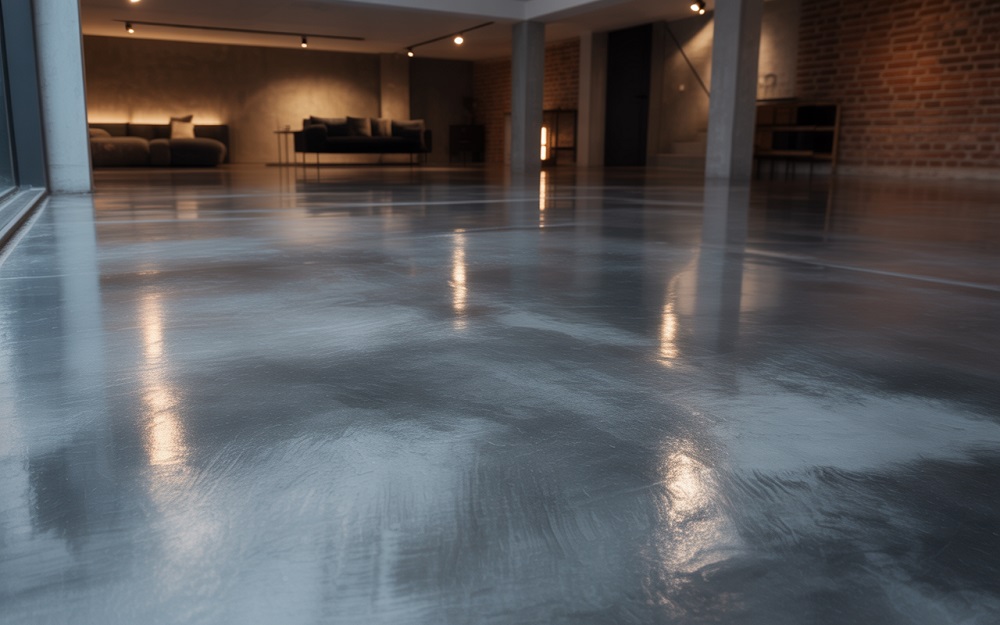
3. Ceramic and Porcelain Tile
Ceramic and porcelain tiles provide a classic solution for basement floors, especially with new designs emerging in 2026. Large-format tiles keep grout lines to a minimum, which means less cleaning and a more streamlined look. Porcelain tiles are especially valued for their durability and water resistance. Advances in manufacturing have produced wood-look and stone-look tiles that closely resemble their natural counterparts. It’s important to use a proper waterproof membrane during installation to protect against moisture.
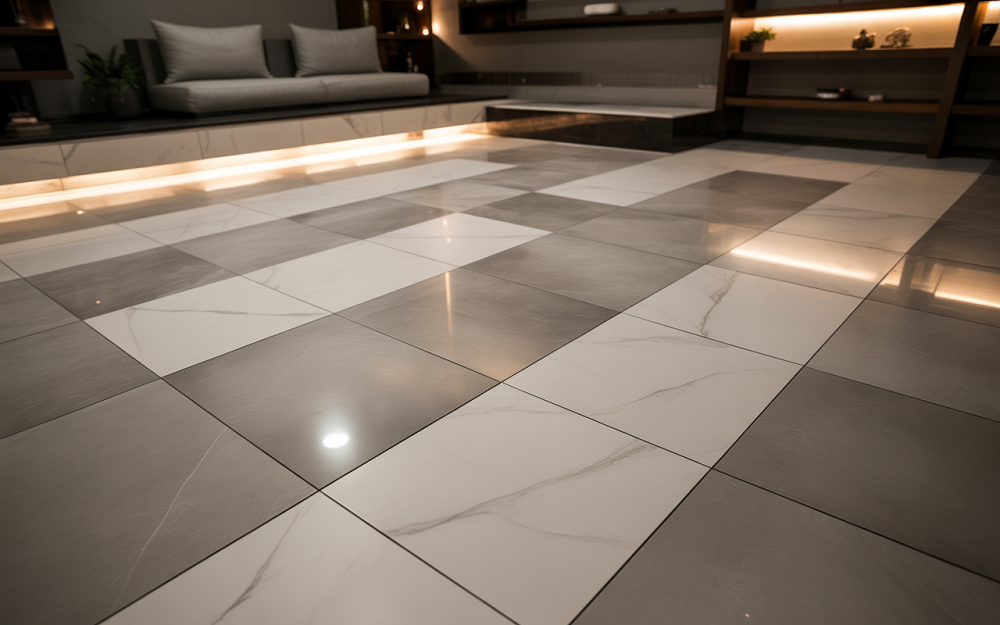
4. Epoxy Flooring Systems
For a modern, industrial look, epoxy flooring delivers both style and durability. This flooring forms a continuous, waterproof layer that stands up to heavy use and accidental spills. The surface is easy to clean, and it prevents moisture from seeping in, which is crucial for basements. Epoxy finishes can be customized with color chips, metallic pigments, or bold, solid hues.
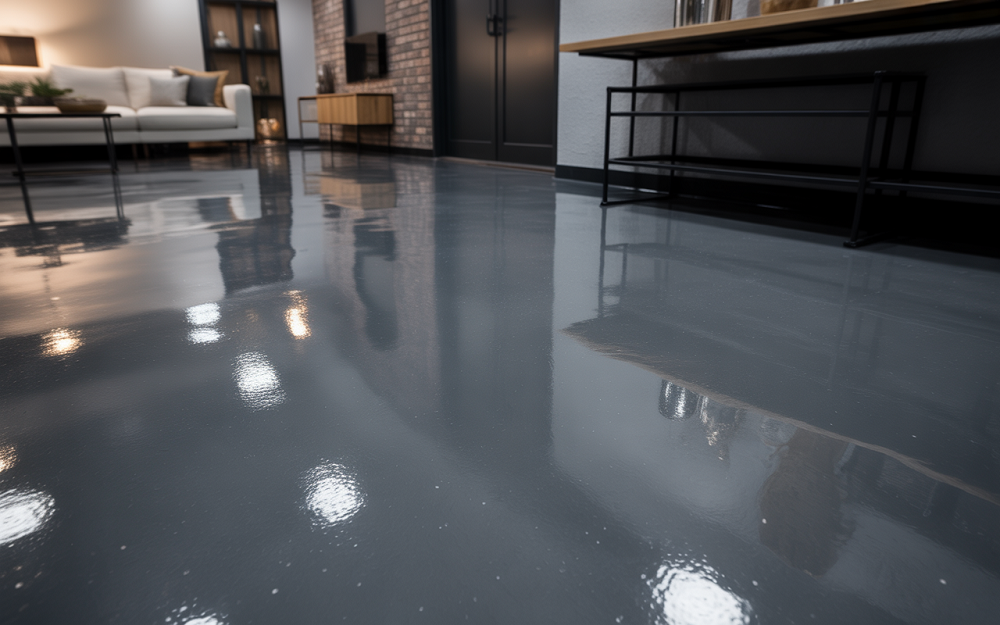
5. Engineered Hardwood Floor
Engineered hardwood flooring is designed to handle higher humidity and temperature changes found in basements. Its structure uses a genuine wood top layer supported by stable core materials, providing both elegance and resilience. The addition of moisture barriers and improved construction methods extend the life and appearance of the floor in a basement setting.
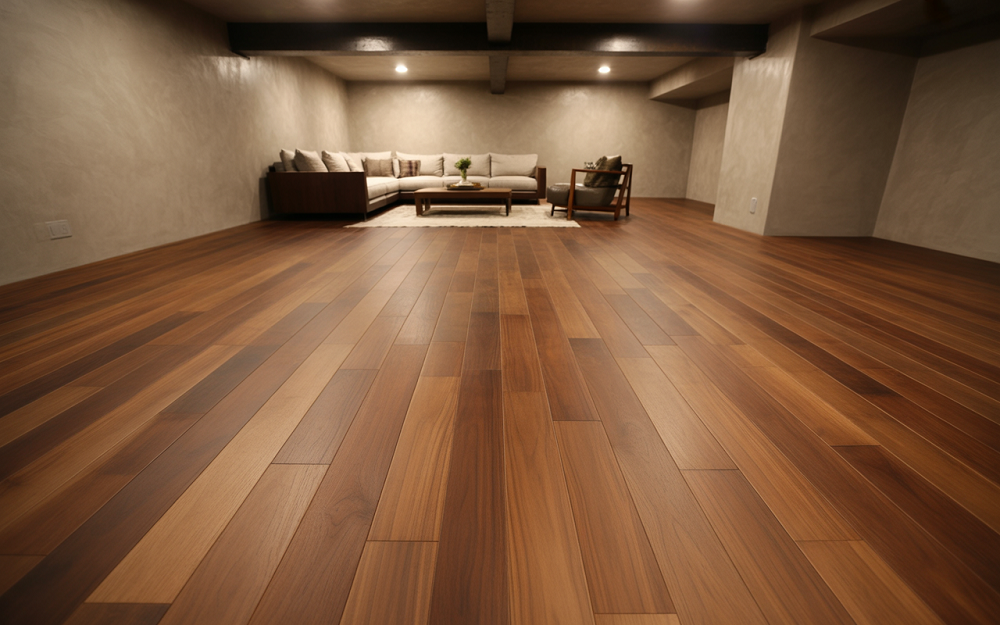
6. Rubber Flooring
Rubber flooring has moved beyond gym use to become a stylish and practical basement option. It offers exceptional comfort underfoot, natural insulation, and immunity to moisture. This material resists mold, mildew, and bacteria, while also reducing noise, an asset in multi-level homes. Modern rubber flooring comes in a wide variety of colors, patterns, and textures, some even mimicking wood or stone.
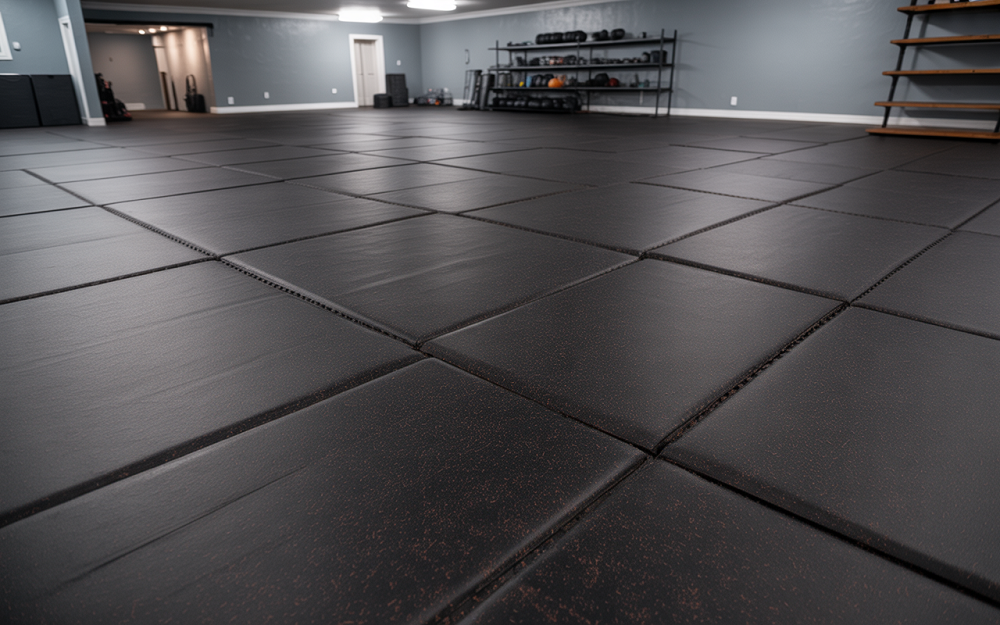
7. Laminate Flooring
Modern laminate flooring has overcome earlier issues to become a viable choice for basements. Water-resistant and waterproof varieties can now handle humidity and minor moisture without swelling or warping. These floors offer realistic wood and stone visuals at a lower cost, and the AC rating system helps select the right durability for your needs.
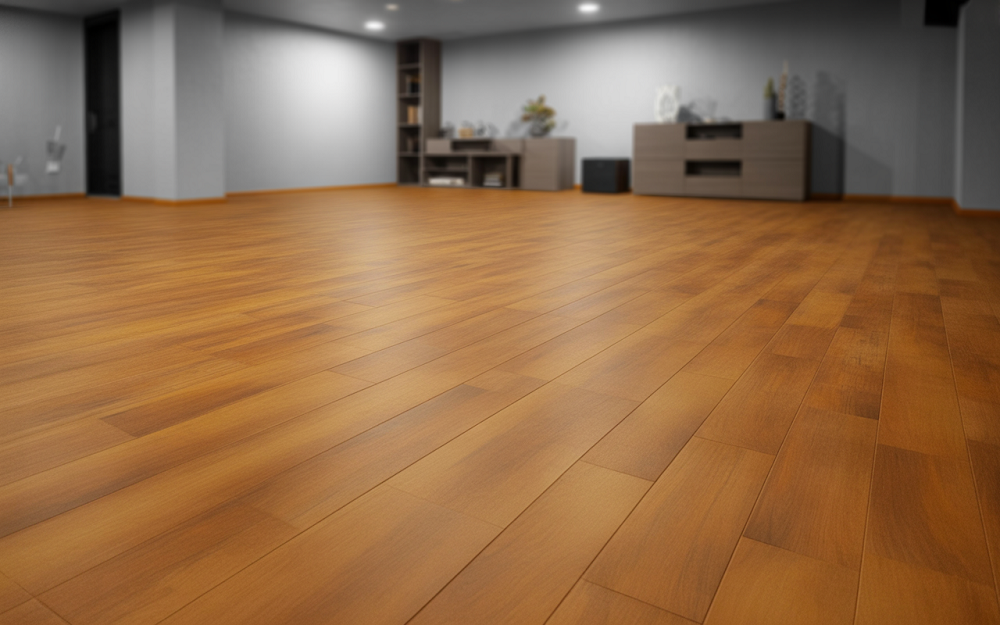
8. Carpet Tiles
Carpet tiles are an excellent solution for basements, combining comfort with practicality. If one tile is damaged by moisture or stains, it can be swapped out individually. This modular system allows for creative layouts and easy access to utility lines below the floor. Modern carpet tiles come with moisture-resistant backings and fibers that dry quickly, preventing mold and mildew.

9. Concrete Staining and Scoring
Staining concrete transforms plain gray floors into beautiful, unique surfaces that rival stone or tile. Acid stains create permanent color variations, while water-based stains offer more choices and easier application. Scoring techniques use diamond blades to add patterns that mimic tiles, wood planks, or custom artwork, breaking up large expanses of concrete.

10. Hybrid Vinyl and Stone Plastic Composite (SPC) Flooring
Hybrid vinyl and SPC flooring represent the latest advancements in basement flooring. These products blend the best features of laminate, vinyl, and tile, resulting in floors that handle water, resist scratches, and remain stable under temperature changes. Rigid core construction offers dimensional stability, while the wear layer protects against daily wear and tear. The click-lock system creates tight seams to block moisture.
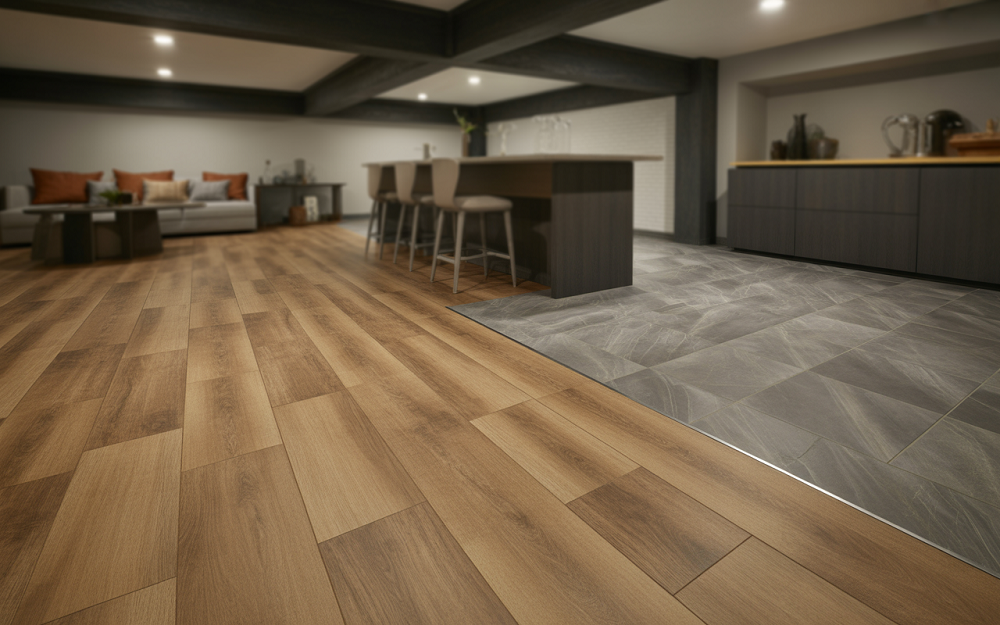
Choosing the Right Basement Flooring for 2026
Selecting the best basement floor depends on your basement's conditions and your lifestyle. If your space sees frequent moisture, options like LVP, tile, or epoxy are wise picks. For comfort and warmth in living areas, engineered hardwood or carpet tiles add a cozy touch. Rubber flooring is perfect for gyms or playrooms, while polished or stained concrete suits modern, low-maintenance spaces.
Budget, room use, and your installation skills also play a role. DIY-friendly materials like interlocking tiles and sheet vinyl are practical for quick upgrades, while more complex installations, such as epoxy or engineered hardwood, may require professional help. Consider the style you want and match the flooring to your vision.
